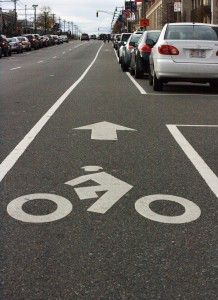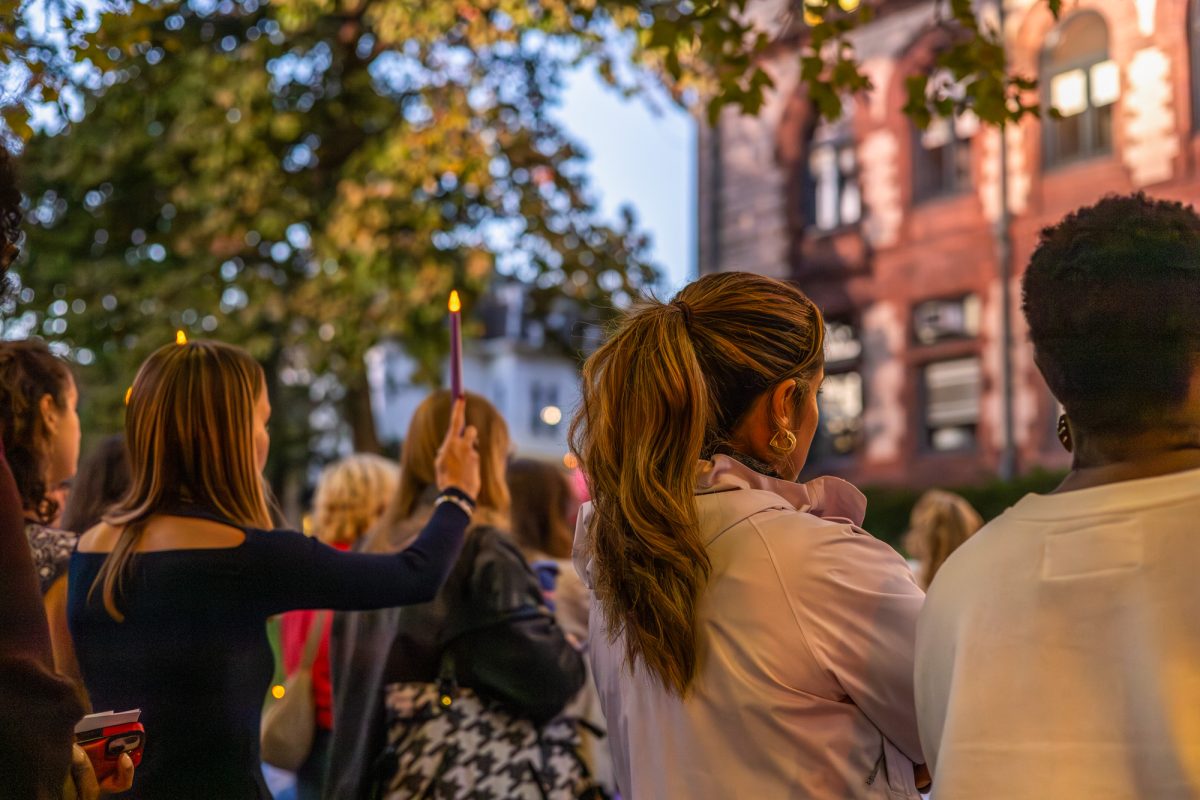
Navigating the stretch of Massachusetts Avenue from Boylston Street to Symphony Hall can be quite the task for city cyclists like Bud Durand, something the general manager of Cambridge Bicycle learned the hard way.
“It’s a very narrow and dangerous section of Mass. Ave., and the bike path will make that section a lot safer,” Durand said. “I have been hit myself on that stretch of road and I have witnessed another biker being hit there.”
Thanks to a new bike lane to be created in that section of town, that trip won’t be nearly as hairy. Cyclists will be able to ride down Massachusetts Avenue safely by the end of the year, but the new bike lane will replace about 70 parking spaces.
The change is part of Boston’s Bike Network Plan to design a system of bicycle lanes connecting the entire city, according to the City of Boston’s website. Planning began in January and has continued throughout the year.
The proposed network will increase bicycling in Boston and improve levels of safety and connectivity for cyclists at all riding levels, according to BBNP’s website.
More cyclists have been injured on Massachusetts Avenue than in any surrounding areas in recent years, according to a City of Boston presentation from earlier this year. Twenty-five cyclists were involved in crashes from October 2009 to October 2010 on the stretch of Massachusetts Avenue that the project will renovate.
“Mass. Ave. has always been a huge thoroughfare in Boston, which means that it sees a lot of bike traffic,” said Parker Musselman, manager at Urban AdvenTours, a downtown-Boston bike shop.
There is already a bike path on Massachusetts Avenue on the Cambridge side of the river, but not further down in Boston, Musselman said.
“The advantages of a bike lane are that the flow of both bike and car traffic are sanctioned on the road and gives both parties a clear understanding of where to drive and ride,” Musselman said. “It shows drivers that bikes have a place on the road and a right to be there, as well as giving cyclists, especially new ones, a feeling of comfort and safety.”
Some business owners with shops along the road said they are less enthusiastic about the new bike lane than cyclists are.
“It’s really going to kill the businesses here. I think it’s a stupid idea,” said Bruce Sabokrooh, owner of Pita, a Mediterranean restaurant, and Fern Flower Shop, both located along the stretch of road targeted for renovations.
“Where will our customers park? I have no idea,” Sabokrooh said. “Where we will park? Where police will park? It doesn’t make sense. I know all of the businesses here and nobody is happy about it. We know how this will affect us negatively.”
Durand said that businesses along Massachusetts Avenue should not worry about losing customers when the city removes the parking spots.
However, businesses along the street survive on the walking traffic from college students and area residents, and not on parking customers, Durand said.
“It’s a good direction for Boston to be moving into,” Durand said. “A similar thing happened in Cambridge, and it has definitely made things safer over here.”
Cyclists at different experience levels said that they would prefer to ride on a road with a clearly defined bike lane, according to BBNP’s poll.
“The new bike lane will split up the road to make [drivers] more aware that there is another type of traffic [besides just automobiles] on the road,” said Brendan, an employee at Back Bay Bicycles who asked to keep his last name anonymous. “It will make people drive more responsibly. For now, the real thing bikers need is a little boost of confidence.”



















































































































John S. Allen • Oct 9, 2014 at 10:58 am
Many people quoted in the article say that the bike lane makes bicycling safe, but the bike lane shown in the photo and the ones installed on Massachusetts Avenue aren’t. They are mostly in the door zone of parked cars where a bicyclist is completely defenseless if a door opens, and where nicking an opening door with the end of a handlebarwill fling the bicyclist out into the path of overtaking traffic. These lanes do not give bicyclists a place on the road, they create a false sense of security. Knowledgeable bicyclists stay outside the door zone, because the much-feared hit-from-behind collision is very rare in urban areas, while doorings, right hook and left cross collisions, all made more likely by riding tooo far to the right, are the most common.